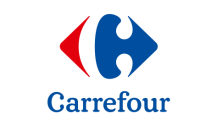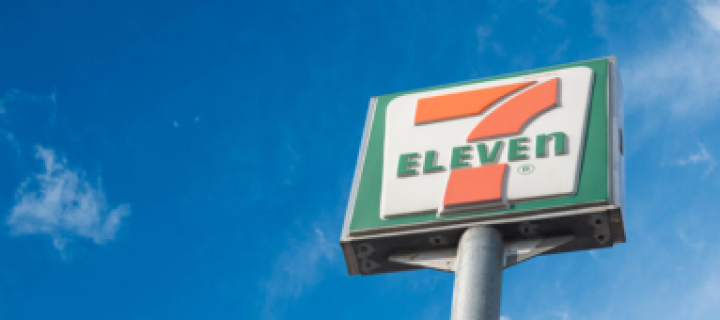
This is retail but not as you know it.
The next generation of barcodes will enable retailers to revolutionise the way they manage their inventory, improving visibility and being more efficient.
They can block expired products from being sold at till, accurately forecast stock based on real time data and easily facilitate recalls. All this, while having a handy way for consumers to scan and access useful product information.
One smarter barcode, many possibilities
QR codes powered by GS1 unlock a world of features for retailers looking to offer new and engaging consumer experiences.
They combine the digital and physical world, increase traceability and trust, optimise inventory allowing for faster fulfillment, smarter storage and simplified, connected packaging.
QR codes powered by GS1 help your audience shop with confidence.
Thanks to GS1 standards, QR codes powered by GS1 can link directly to a product’s verified unique identity and characteristics.
This could include allergy information, rules and regulations, safety alerts and more, allowing more efficient recalls and preventing the sale of potentially harmful products at the POS.
The benefits of QR codes powered by GS1 extend way beyond an ordinary barcode.
With just one quick scan from a smartphone or handheld scanner, a wealth of information opens up to inspire more informed and personalised decision-making, whether at home, in store, in the stockroom, warehouse and beyond.
Product knowledge, sustainability, recycling, inclusive packaging are all enhanced with next generation of barcodes, which can deliver real-time data on consumer behaviour.
Retailers already on board
We are pleased to be collaborating with GS1 UK to explore the potential benefits for customers and for our business from QR codes powered by GS1. We know our customers want the opportunity to access detailed product information instantly via their smartphone and we are also always looking for solutions for reducing waste and tracking products more effectively throughout our supply chain. QR codes powered by GS1 will help us meet these challenges and we are already taking steps to prepare for the transition.Supply chain & development director, Tesco
Core features
Waste reduction
Get real-time information on stock levels, expiry dates, sales volumes and more, for more accurate forecasting and waste reduction.
Inventory management
Track product and stock information with granular detail through warehouses and storefronts.
Returns management
React swiftly to potential safety issues, block potentially harmful products at POS, precisely identify affected products for targeted recalls and communicate vital safety alerts more effectively.
Sustainability & recycling
Provide consumers with location specific recycling instructions, while also being able to track product lifecycles through to Digital Deposit Return Schemes and other circular economy initiatives.
Case studies
FAQs
Curious about how QR codes powered by GS1 can revolutionise your business? Check out our frequently asked questions.
A QR code powered by GS1 is a QR code that has been encoded with a GS1 Digital Link. The GS1 Digital Link defines how to combine GS1 identifiers, such as GTINs, with domain names. This creates unique, powerful digital identifiers that serve as gateways to digital content.
QR codes powered by GS1 can be read by smartphones and scanning systems used the world over, both at the point of sale and throughout the supply chain.
QR codes are enhanced 2D barcodes with higher storage capacity than traditional linear barcodes. While EAN/UPC barcodes hold up to 13 digits, QR codes can store over 4,000 alphanumeric characters and can be scanned from any orientation using smartphones or image-based scanners.
QR codes powered by GS1 not only link to web content, they also contain unique digital product identifiers, facilitating seamless connections across a broad range of B2B and B2C channels.
They empower stakeholders with control over online content customisation and enable supply chain traceability by encoding additional data like batch numbers and expiry dates. QR codes powered by GS1 can do anything a regular QR code can do and so much more.
Globally, GS1 aims to ensure a comprehensive rollout by 2027. EAN/UPC barcodes will not suddenly disappear. This is the date that the retail industry anticipates having the ability to scan 2D barcodes at point of sale.
Current retail systems and scanners need updating And manufacturers will need to update printing capabilities to mark the new symbols in pack. Whilst some organisations will be able to rapidly transition to 2D barcodes, some stakeholders will still require EAN/UPC barcodes.
This means there will be a period of gradual transition, where both symbols are appear on pack until the use of QR codes powered by GS1 becomes widespread.
With support from our members and solution providers, GS1 has done a number of scanning tests and developed standards and guidelines to ensure that QR codes will scan at point of sale with no negative impact.
Adhering to GS1 standards for QR size, colour, quiet zones and placement will help ensure QR codes scan as they should. Scanners will also require an update to ensure that they can recognise and prioritise QR codes powered by GS1. It is always best to talk to your supplier to understand the capabilities.
There are many pieces of scanning or printing hardware which can print or scan QR codes powered by GS1 with just a simple software update, while some hardware will need updating. If there is the intention to dynamically print the QR codes, so that they are encoded with more detail than a URL link and GTIN, then there will need to be a process change on the supply line.
In all cases, a conversation will be needed with the hardware and software supplier as to what is possible.
As a retailer, you should consider which product ranges and use cases you want to prioritise. It is then worth speaking to your suppliers to gather information and consider the scope of a pilot. They will need to make enquiries with their software and hardware suppliers, while you should also start talking to your own technology suppliers.
Get future ready today
Kickstart your business transformation by unlocking the power of next generation barcodes. Submit your details below to be contacted by a member of our team.









